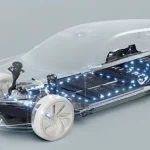Toray is starting to evaluate the recovery using actual lithium-ion batteries and will accelerate research and technological development to commercialize its approach.
The challenge with the mainstream evaporation pond process for lithium production is that the number of high-output locations is limited.
The alternative to this is the ore process which has issues with its lengthy production process and high-temperature heat treatment, generating high carbon dioxide emissions and increased costs which could drive lithium-ion battery prices even higher.
Nanofiltration membranes can selectively separate dissolved multivalent ions and organic matter. Prime uses of these membranes are to filter ground and river water hardness and agricultural chemicals.
They also desalinate and purify in food and biotechnology applications.
One downside of conventional nanofiltration membranes is their vulnerability to highly acidic solutions, limiting their application to the neutral region. Another is insufficient selectivity for multivalent ions, hampering separation efficiency. Prevailing membranes thus cannot use potent acids to leach and recover valuable metals from used lithium-ion batteries.
Toray created a cross-linked polymer membrane combining a highly acid-resistant setup and a precision pore structure smaller than 1nm. This success is the result of using organic synthesis, polymer chemistry, and nanotechnology after analyzing membrane degradation from acids and optimal membrane pore structures for selective separation. The acid-resistance of this membrane is around five-fold higher than conventional offerings, with the selectivity being 50% greater.
Toray’s technology will streamline the recovery of valuable metals and make it possible to recover high-purity lithium in high yields. Carbon dioxide emissions from recovering 1kg of lithium through Toray’s nanofiltration membrane are nearly two-thirds lower than from the ore process.
Toray will collaborate with automakers, battery and battery material manufacturers, recycling companies, and other players to establish a lithium recycling approach.
